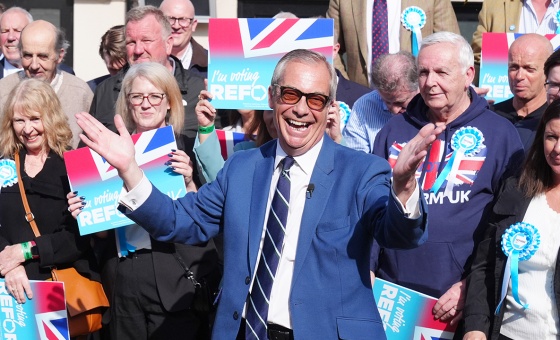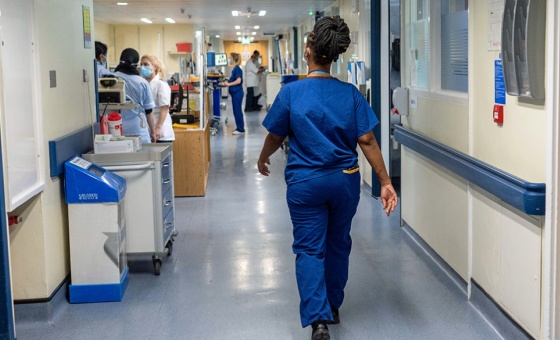This is the last article you can read this month
You can read more article this month
You can read more articles this month
Sorry your limit is up for this month
Reset on:
Please help support the Morning Star by subscribing here
TODAY progressive thinkers across the world are mourning the death of Fidel Castro. The man who tweaked Uncle Sam’s beard and built an island of socialism just 90 miles from the coast of the USA.
The official Communist Party newspaper in Cuba was, and still is, called Granma. The name was taken from the motor yacht of that name which delivered Fidel Castro and 81 other freedom fighters to the mafia-controlled island of brothels and gambling casinos that was 1950s Cuba.
At this time, this Caribbean island had become a cesspit of a holiday destination for rich Americans with all the trappings of a place run by organised crime and their puppet the dictator Fulgencio Batista.
At two in the morning on November 25 1956, a 60-foot, 20-odd year-old, rattling and rusting motor yacht slipped out of the Mexican port of Tuxpan, Veracruz. She set sail for the thousand-mile voyage across the dangerous waters of the Gulf of Mexico.
The little ship was seriously overcrowded. She had been designed to accommodate just a dozen passengers and crew.
For this momentous cruise, there were 82 members of the revolutionary group the 26th of July Movement.
At the head of this small but gallant band was a Cuban lawyer who had recently been released from jail. He had been imprisoned for political activity and had used his time to sharpen his political understanding reading Marx, Engels, Lenin as well as South American anti-imperialist writers.
Also on the Granma were other revolutionaries who would play their part in the liberation of Cuba and its people.
The band included Fidel’s brother Raul, Ernesto “Che” Guevara and Camilo Cienfuegos.
At the helm of the Granma was Norberto Collado Abreu, a Cuban Navy veteran and strong supporter of Fidel and his plan to bring socialism to the island home they shared.
They had bought the little yacht, named by the original owner as a tribute to his grandmother, by devious means for just $15,000 from a Florida based dealer via a Mexican agent. The deal was only completed on October 19, just over a month before they set sail.
This little ship wasn’t the first planned method for landing an advanced party of freedom fighters in Cuba. Fidel had first tried to buy a Catalina flying boat but the price was just too high for his young, small and frankly hard-up movement.
Nor could they afford their second choice, an ex-US Navy Crash Tender.
There were many of these fast and handy crafts for sale in ports in Florida but purchasers came under intense scrutiny by the Coast Guard and the FBI in case they were being bought by gangs of smugglers.
Fidel’s supporters in Florida — including former Cuban president Carlos Prio Socarras, who had been ousted by the mafia and their crooked dictator Batista — eventually scraped together the money to buy the Granma.
Antonio del Condo, a Mexico City arms dealer and a friend and supporter of Fidel’s group found the little yacht and although it wasn’t perfect, it would prove adequate to do the job.
Antonio del Condo was always known as “The Friend.”
He would go to jail for his part in buying the Granma but later play his part in building the new Cuba. He is still alive and has spoken out in grief and appreciation since the death of his friend and comrade, Fidel.
Those who sailed on the Granma would later become known collectively as “Los expedicionarios del yate Granma” (The Granma yacht expeditioners).
Their trip would not be an easy one. For more than a week the over-loaded small ship battled across the far-from-friendly seas.
The Granma leaked, needing constant attention to the pumps. Supplies ran low. Sea-sickness sapped morale and efficiency among the crew.
Then, finally on December 2, they made landfall coming ashore on the beach of Playa Las Coloradas, in what today is known as the Granma Province.
The landing place was carefully chosen. Sixty-one years earlier, national hero Jose Marti had landed in the same location during the wars of independence from Spanish colonial rule.
In his later writings Che Guevara would remember the landing on Cuban soil: “We reached solid ground, lost, stumbling along like so many shadows or ghosts marching in response to some obscure psychic impulse.
“We had been through seven days of constant hunger and sickness during the sea crossing, topped by three still more terrible days on land. Exactly 10 days after our departure from Mexico, during the early morning hours of December 5, following a night-long march interrupted by fainting and frequent rest periods, we reached a spot paradoxically known as Alegria de Pio (Rejoicing of the Pious).”
Fidel and his band took shelter in the hills — the Sierra Maestra. The guerilla war had started. The 82 became hundreds, the hundreds became thousands.
By late in 1958, Fidel had broken out of the high Sierra and all over the island Cubans flocked to his cause. After Castro captured Santa Clara, the dictator Batista fled with his family into exile — first to the Dominican Republic, then to Madeira and finally to Estoril, Portugal.
On January 8 1959, Fidel and his band marched into Havana. A new day dawned for Cuba. In Washington Uncle Sam first trembled and then got angry. The US authorities would try everything to get rid of Fidel, including hundreds of assassination attempts and a savage embargo of all Cuban trade and travel.
None of this would be successful but what would succeed was the development of a Cuban health service and an education system acclaimed as some of the best in the world. These will be the true inheritance of Fidel Castro who died aged 90 last week.
Today, the Granma is on permanent display in a glass enclosure adjacent to the Museum of the Revolution in Havana.
Thousands of Cubans and foreign tourists come to pay tribute to those brave sailors who took the trip on the brave little ship the Granma and light a flame that is still burning in the Caribbean, throughout Latin America and across the globe.
We need your support to keep running. If you like what you read please donate by clicking here






